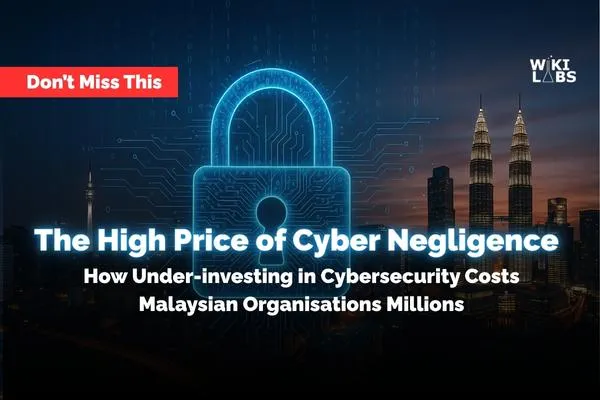
The Hidden Costs of Ignoring Cybersecurity

Executive Summary
A single cyberattack can cripple operations for days, cost tens of millions of ringgit in ransom and fines, and destroy customer trust overnight. Yet too many organisations treat cybersecurity as an afterthought—allocating under 5% of IT budgets to defence. This article explores what can go wrong, real-world Malaysian examples, and a practical 5-step plan to build resilience.

Why Security Often Loses Out
Budget Misconceptions
Many believe “it won’t happen to us.” In fact, 60% of mid-market firms in ASEAN have experienced at least one breach in the past two years.
Allocating just 1% more of your IT spend to security can reduce breach costs by over 25%.
Talent Shortages
Malaysia faces a 40% cybersecurity skills gap. Organisations end up outsourcing incident response at premium rates—often paying RM 500–1,000 per hour for emergency support.
Complex Hybrid Environments
As workloads span on-premises, public cloud and edge devices, manual monitoring fails. Attack surfaces multiply: IoT sensors in factories, remote-worker VPNs and third-party APIs all introduce new vulnerabilities.
Ready to reverse these trends? Fill up our form today for a complimentary Cyber-Resilience Assessment tailored to your environment.
True Cost of a Data Breach

Figures converted using 1 USD = 4.84 RM; ASEAN data from IBM/Ponemon 2024.

Case Studies: Malaysian Wake-Up Calls
Ransomware at KLIA (23 March 2025)
Attackers encrypted check-in kiosks and flight boards, demanding US $10 million (≈ RM 48 million). Operations ground to a halt for 8 hours, stranding 10 000 passengers and incurring RM 5 million in emergency logistics and compensations.
Media Prima Bitcoin Demand (Nov 2018)
1 000 BTC (≈ RM 27 million) ransom demand after network encryption. Though refused, the group spent RM 12 million on incident response, legal fees and PR management and lost key advertisers.
Don’t wait for the next headline. Fill up our form now to initiate your own tailored incident-readiness review.

Five-Step Cyber-Resilience Roadmap
Assessment & Discovery
Conduct a full asset inventory across cloud, on-prem and IoT.
Use automated vulnerability scanners monthly and pen-testing quarterly.
Prioritisation & Planning
Map vulnerabilities to business impact (e.g. PCI-DSS systems, customer PII stores).
Define a risk-based roadmap: patch high-impact CVEs within 72 hours; low-impact within 30 days.
Prevention & Hardening
Deploy next-gen firewalls, endpoint detection and response (EDR), and network segmentation.
Enforce multi-factor authentication (MFA) on all privileged access—no exceptions.
Detection & Response
Implement a Security Operations Centre (SOC) or managed SIEM to monitor logs and network flows in real time.
Establish an Incident Response Plan (IRP) with clear roles, runbooks and a 24×7 on-call roster.
Recovery & Improvement
Regularly test backups (offline and immutable) with quarterly restore drills.
After each incident or simulation, run a post-mortem to update policies and controls.

What You Risk If You Delay
Financial: RM 24 million+ average breach bill, plus potential PDPA fines up to RM 500 000 per incident.
Operational: Days of unplanned downtime, 30–50% productivity loss, disrupted supply chains.
Reputational: Customer churn rates can spike by 20% after publicised breaches—plus lasting brand damage.
Regulatory: Fines, litigation costs and mandatory audits under KLSE-listed requirements or Bank Negara guidelines.

Executive Action Plan
Don’t wait for the next headline. Submit your organisation’s profile via our online form, and we’ll deliver a customised Cyber-Resilience Assessment and Roadmap within two weeks—complete with a complimentary tabletop exercise for your leadership team.
Take the first step: **Fill up our form to receive your customised Cyber-Resilience Roadmap—complete with a complimentary tabletop exercise for your leadership team.
